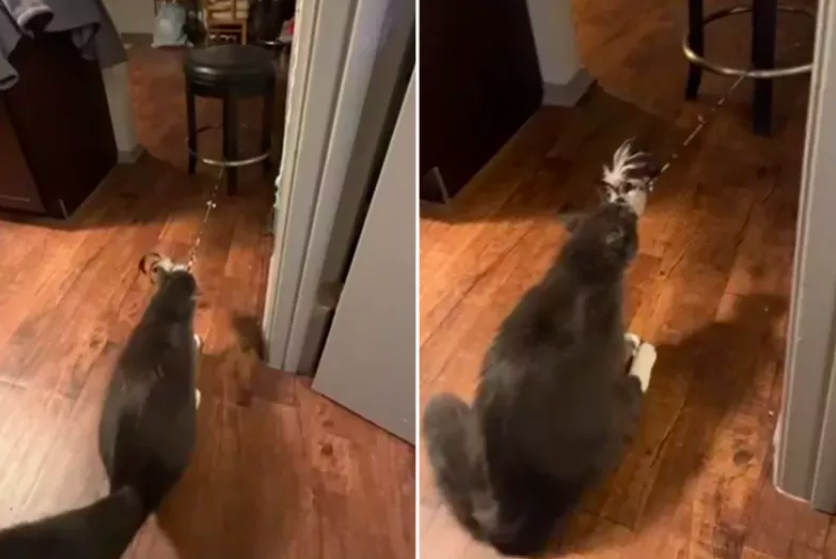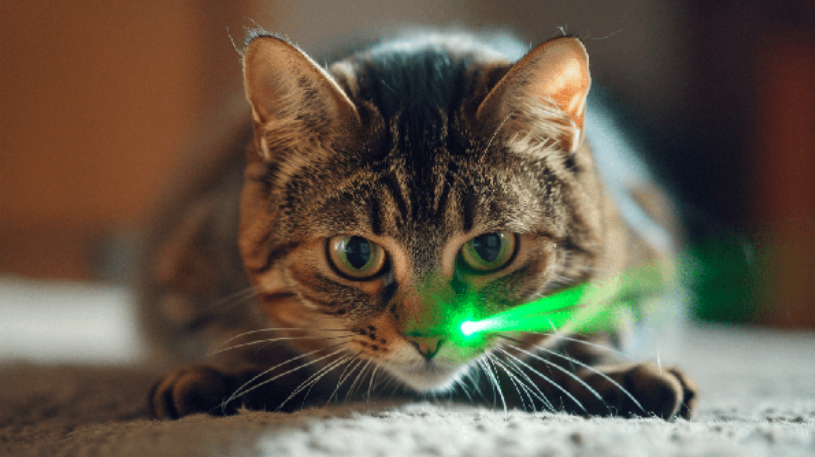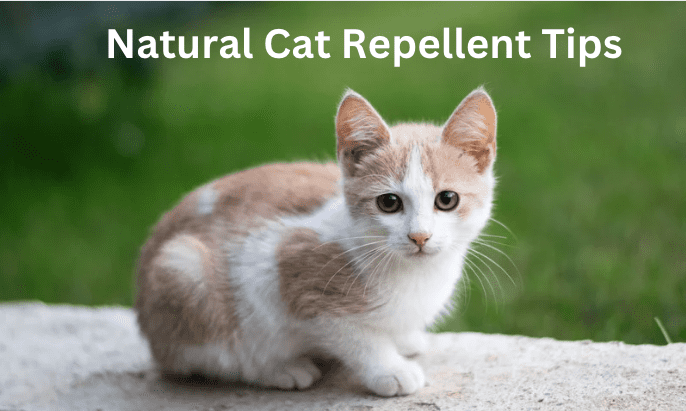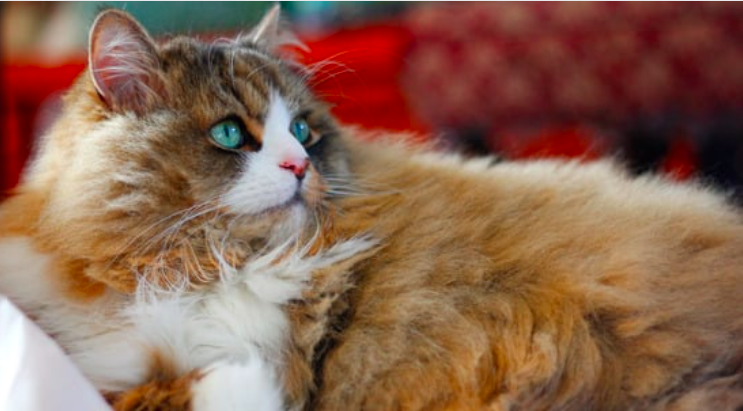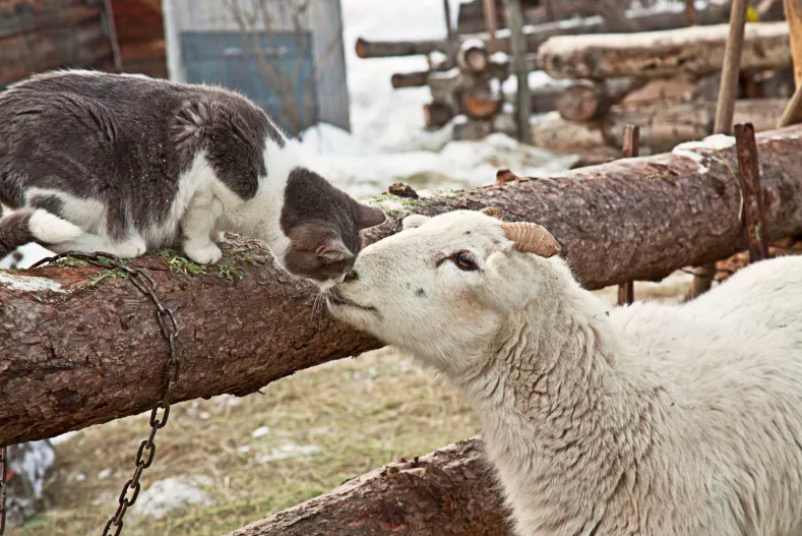Cats
How To Identify Signs Of Ringworm In Cats: A Comprehensive Guide
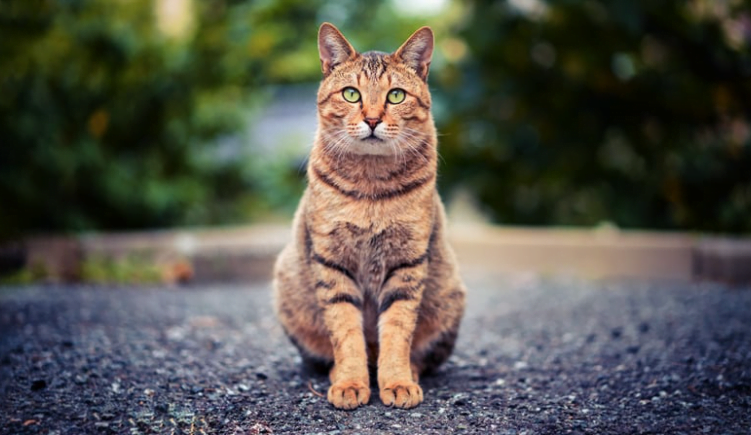
How To Identify Signs Of Ringworm In Cats: A Comprehensive Guide
As cat owners, we always want to ensure that our furry friends are healthy and happy.
Unfortunately, cats can sometimes develop ringworm, a fungal infection that can cause discomfort and spread to other pets and humans in the household.
Ringworm is a common fungal infection that affects cats of all ages and breeds.
This infection can be transmitted to humans, so it is essential to recognize the signs of ringworm in cats early to prevent the spread of the infection.
In this comprehensive guide, we will discuss the signs of ringworm in cats, its causes, diagnosis, and treatment.
In this article, we will discuss the signs of ringworm in cats, how to identify and treat this infection, and how to prevent its spread.
What is Ringworm?
Ringworm is a common fungal infection that affects the skin, hair, and nails of humans and animals, including cats. Despite its name, ringworm is not caused by worms but by a group of fungi called dermatophytes that thrive in warm, moist environments.
These fungi can infect the skin and cause a range of symptoms, including red, scaly, and itchy patches or lesions that may have a ring-like appearance.
Ringworm can be transmitted from one person or animal to another through direct contact with infected skin or contaminated objects, such as towels, clothing, or bedding.
Causes Of Ringworm In Cats
Ringworm in cats is caused by a group of fungi called dermatophytes. The most common species that cause ringworm in cats are Microsporum canis, Microsporum gypseum, and Trichophyton mentagrophytes.
These fungi are highly contagious and can easily spread from one cat to another through direct contact with infected skin, hair, or claws.
Cats that are young, old, or have a weakened immune system are more susceptible to ringworm. Additionally, cats living in crowded or unsanitary conditions, such as animal shelters or catteries, are more prone to contracting ringworm.
Environmental factors, such as high humidity and poor ventilation, can also contribute to the growth and spread of dermatophytes in a cat’s environment.
Signs Of Ringworm In Cats
Ringworm in cats can present with a variety of symptoms, some of which may be more noticeable than others. Here are some common signs of ringworm in cats:
- Skin lesions: Ringworm often causes circular, raised, and scaly skin lesions that may be red or gray in color. These lesions can appear anywhere on a cat’s body but are most commonly found on the head, ears, and paws.
- Hair loss: Ringworm can cause a cat’s fur to become brittle and break easily, leading to patches of hair loss. These patches may be circular in shape and may or may not be accompanied by skin lesions.
- Itching: Some cats with ringworm may experience itching or discomfort around the affected areas. This may cause the cat to scratch or bite at their skin, leading to further irritation.
- Crusty or flaky skin: In severe cases of ringworm, a cat’s skin may become crusted or flaky. This can be a sign that the infection has spread or that the cat’s immune system is struggling to fight off the fungus.
- Inflammation: Ringworm can cause inflammation and swelling around the affected areas. This may make the skin feel warm or tender to the touch.
- Thickened Nails: In severe cases, ringworm can cause thickened, discolored nails in cats. The nails may become brittle and break easily.
- Dandruff: Cats with ringworm may develop dandruff-like flakes on their coat. The flakes may be white, yellow, or gray, and may be visible on dark surfaces.
If you suspect that your cat may have ringworm, it is important to seek veterinary care as soon as possible. Ringworm can be easily treated with antifungal medication, but early diagnosis and treatment are key to preventing the infection from spreading to other pets or humans in the household.
Diagnosis Of Ringworm In Cats
Diagnosing ringworm in cats can be challenging, as the symptoms can mimic those of other skin conditions. Your veterinarian will likely perform a combination of tests to determine if your cat has ringworm. Here are some common methods of diagnosing ringworm in cats:
- Wood’s lamp examination: This is a quick and non-invasive test that involves shining a special UV light on the cat’s fur. Ringworm fungi will glow under the light, allowing your veterinarian to identify affected areas.
- Fungal culture: A fungal culture involves collecting hair or skin samples from your cat and growing them in a laboratory to see if ringworm fungi will grow. This is a more reliable way to diagnose ringworm, but it can take several days for the results to come back.
- Skin biopsy: In some cases, your veterinarian may need to perform a skin biopsy to confirm a diagnosis of ringworm. This involves taking a small sample of skin tissue from the affected area and examining it under a microscope.
If your cat is diagnosed with ringworm, your veterinarian may also recommend testing other pets in the household for the infection, as well as checking any humans who have come into contact with the infected cat. Early diagnosis and treatment are important to prevent the spread of ringworm to other animals and people.
Treatment Of Ringworm In Cats
Treating ringworm in cats usually involves a combination of topical and oral medications. Here are some common treatments for ringworm in cats:
- Topical treatments: Antifungal creams, sprays, or shampoos may be prescribed to kill the ringworm fungus on the cat’s skin. These medications are usually applied directly to the affected areas of the skin and may need to be used for several weeks.
- Oral medications: In more severe cases, your veterinarian may prescribe oral antifungal medications. These medications are usually given daily for several weeks and may have some potential side effects, so it’s important to follow your veterinarian’s instructions carefully.
- Environmental decontamination: Because ringworm spores can survive in the environment for long periods of time, it’s important to thoroughly clean and disinfect any areas where your cat has been, including bedding, toys, and litter boxes. Your veterinarian may recommend specific products or methods for decontaminating your home.
It’s important to follow your veterinarian’s instructions closely when treating ringworm in cats, as incomplete or inconsistent treatment can lead to re-infection or the spread of the infection to other animals or humans.
In some cases, your veterinarian may recommend re-testing your cat after treatment to ensure that the infection has been fully resolved.
Prevention Of Ringworm In Cats
Preventing ringworm in cats involves taking steps to reduce the risk of exposure to the fungus that causes the infection. Here are some tips for preventing ringworm in cats:
- Practice good hygiene: Wash your hands thoroughly with soap and water after handling cats, especially those that may have been exposed to ringworm.
- Isolate infected cats: If you have a cat with ringworm, it’s important to isolate them from other cats and animals until the infection has been treated and resolved.
- Keep your cat’s environment clean: Regularly clean and disinfect your cat’s litter box, bedding, toys, and other areas where your cat spends time. This can help reduce the risk of exposure to ringworm spores.
- Maintain a healthy immune system: Cats with weakened immune systems may be more susceptible to ringworm infections, so it’s important to keep your cat healthy through regular veterinary check-ups, a nutritious diet, and appropriate exercise.
- Avoid contact with infected animals: If you work with or handle other animals that may have ringworm, take appropriate precautions to reduce your risk of exposure.
By following these tips, you can help reduce the risk of ringworm in cats and keep your feline friends healthy and happy. If you suspect that your cat may have ringworm or if you have any questions or concerns, be sure to talk to your veterinarian.
Questions People Also Ask: (FAQs)
What is ringworm in cats?
Ringworm in cats is a fungal infection that can affect the skin, hair, and nails.
How do cats get ringworm?
Cats can get ringworm from contact with infected animals, contaminated objects, or from the environment.
What are the signs of ringworm in cats?
Signs of ringworm in cats may include skin lesions, hair loss, scaly or crusty skin, itching, and redness.
Can humans get ringworm from cats?
Yes, humans can get ringworm from cats, especially if they have weakened immune systems or come into close contact with infected cats.
How is ringworm in cats diagnosed?
Ringworm in cats is diagnosed through a combination of physical examination, skin scrapings, and fungal cultures.
How is ringworm in cats treated?
Ringworm in cats is treated with antifungal medications, topical treatments, and environmental decontamination.
How long does it take to treat ringworm in cats?
Treatment for ringworm in cats can take several weeks to several months, depending on the severity of the infection.
Can ringworm in cats be prevented?
Ringworm in cats can be prevented by practicing good hygiene, isolating infected cats, keeping the environment clean, maintaining a healthy immune system, and avoiding contact with infected animals.
Can ringworm in cats be fatal?
Ringworm in cats is generally not fatal, but it can cause discomfort and may lead to secondary bacterial infections if left untreated.
Can ringworm in cats recur?
Yes, ringworm in cats can recur, especially if the underlying cause of the infection is not addressed or if the environment is not properly decontaminated.
We appreciate you for taking the time to read this article!
Finally, we hope you found this article interesting? And what do you think about ”How To Identify Signs Of Ringworm In Cats: A Comprehensive Guide!?”
Please feel free to share or inform your friends about this article and this site, thanks!
And let us know if you observe something that isn’t quite right.
Cats
Clever Cats: Breeds That Learn Fast

Clever Cats: Breeds That Learn Fast
Cats have always fascinated us with their agility, independence, and sometimes enigmatic behavior. Among the vast array of feline breeds, some stand out for their remarkable intelligence and ability to learn quickly.
In this article, we will delve into the world of these exceptional cat breeds, exploring their unique characteristics, training capabilities, and what makes them such quick learners.
Whether you’re a seasoned cat owner or considering adopting a new feline friend, this comprehensive guide will help you understand the breeds that are not only intelligent but also a joy to train.
Why Intelligence Matters in Cats
Understanding Feline Intelligence
Feline intelligence is a multi-faceted trait that encompasses problem-solving abilities, social learning, and adaptability. Unlike dogs, cats often showcase their intelligence in more subtle ways, such as manipulating objects to get what they want or learning routines and commands.
Benefits of Owning Intelligent Cats
Owning an intelligent cat comes with several benefits. These cats are more interactive and engaging, making them excellent companions. They can learn tricks, follow commands, and even understand basic household rules, which makes living with them more enjoyable and less challenging.
Top Cat Breeds Known for Their Intelligence
Abyssinian
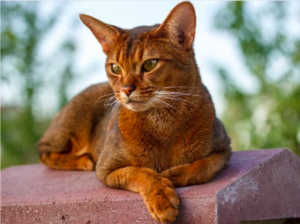
Overview
The Abyssinian is often hailed as one of the smartest cat breeds. Known for their curiosity and playful nature, Abyssinians are quick learners who thrive on mental stimulation.
Training and Activities
Abyssinians are highly trainable and enjoy interactive toys and puzzle feeders. They can learn tricks such as fetching and even walking on a leash. Their love for heights means they appreciate cat trees and climbing structures.
Siamese
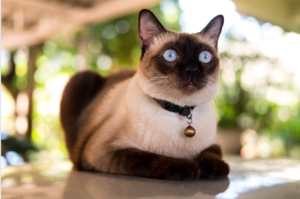
Overview
Siamese cats are not only intelligent but also highly vocal and sociable. They form strong bonds with their owners and are always eager to engage in activities.
Training and Activities
Siamese cats are quick to learn tricks and commands. They enjoy interactive play and can be trained to perform simple tasks like opening doors or retrieving items. Their vocal nature also makes them responsive to verbal cues.
Bengal
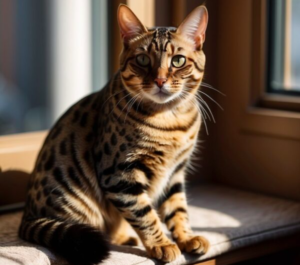
Overview
Bengals are known for their striking appearance and high energy levels. Their intelligence is reflected in their ability to solve problems and learn complex tasks.
Training and Activities
Bengals enjoy activities that challenge their minds, such as agility courses and puzzle toys. They can be trained to walk on a leash and perform tricks. Providing them with interactive playtime helps in channeling their energy positively.
Burmese
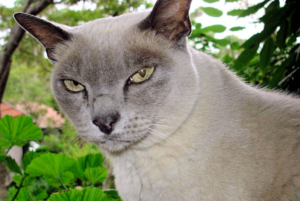
Overview
Burmese cats are affectionate, people-oriented, and intelligent. They enjoy being involved in family activities and can be trained to follow various commands.
Training and Activities
Burmese cats are quick learners and respond well to positive reinforcement. They enjoy learning tricks, playing fetch, and interactive games that stimulate their minds.
Scottish Fold
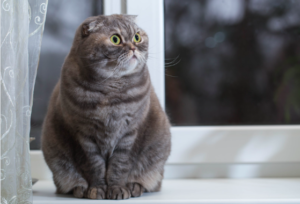
Overview
Scottish Folds are known for their distinctive folded ears and sweet demeanor. Despite their calm appearance, they are intelligent and can learn quickly.
Training and Activities
Scottish Folds enjoy interactive toys and games. They can learn tricks and commands and appreciate routines that keep their minds engaged.
Training Tips for Intelligent Cats
Start Early
Begin training your cat as early as possible. Kittens are more receptive to learning new behaviors and routines.
Use Positive Reinforcement
Reward your cat with treats, praise, or playtime whenever they successfully perform a desired behavior. Positive reinforcement strengthens the association between the action and the reward.
Keep Sessions Short and Fun
Cats have shorter attention spans than dogs, so keep training sessions brief and enjoyable. Incorporate playtime to make learning fun for your cat.
Be Patient and Consistent
Patience and consistency are key when training cats. Repeat commands and routines regularly, and avoid punishing your cat for mistakes. Consistency helps reinforce learning and builds trust.
Challenges of Training Intelligent Cats
Independence and Stubbornness
Intelligent cats can sometimes be independent and stubborn. They might choose to ignore commands if they are not in the mood, so it’s important to understand their behavior and work with it.
Need for Mental Stimulation
Highly intelligent cats require constant mental stimulation. Boredom can lead to behavioral issues, so ensure they have plenty of toys, activities, and interaction to keep their minds engaged.
Managing High Energy Levels
Breeds like Bengals have high energy levels that need to be managed. Providing them with enough physical and mental exercise is crucial to prevent destructive behavior.
Living with Intelligent Cats
Creating an Enriched Environment
An enriched environment is essential for intelligent cats. This includes a variety of toys, climbing structures, scratching posts, and interactive feeders to keep them stimulated.
Social Interaction
Intelligent cats thrive on social interaction. Spend quality time playing, training, and simply bonding with your cat to ensure they feel valued and engaged.
Understanding Their Needs
Each intelligent breed has its own unique needs and preferences. Understanding these and catering to them will help you build a strong and positive relationship with your cat.
Conclusion
Owning an intelligent cat can be an incredibly rewarding experience. These quick learners bring joy, challenge, and companionship to their owners. By understanding their unique characteristics and providing the right environment and training, you can foster a deep and fulfilling relationship with your feline friend.
Whether you choose an Abyssinian, Siamese, Bengal, Burmese, or Scottish Fold, you’re sure to enjoy the remarkable intelligence and personality they bring into your home.
Frequently Asked Questions (FAQs)
What makes a cat breed intelligent?
Intelligent cat breeds often show high levels of problem-solving abilities, adaptability, and social learning. They can quickly learn commands, tricks, and routines.
Can all cats be trained?
While some breeds are more receptive to training than others, all cats can be trained to some extent. Patience, consistency, and positive reinforcement are key to successful training.
What are the best toys for intelligent cats?
Interactive toys, puzzle feeders, and climbing structures are ideal for intelligent cats. These toys provide mental stimulation and keep them engaged.
How do I keep my intelligent cat from getting bored?
Provide a variety of toys, engage in regular playtime, and introduce new activities regularly. Rotating toys and creating an enriched environment also help prevent boredom.
Are intelligent cats more difficult to care for?
Intelligent cats can be more demanding in terms of mental stimulation and interaction. However, with the right approach and environment, they can be delightful companions.
We appreciate you for taking the time to read this article!
Finally, we hope you found this article interesting? And what do you think about ”Clever Cats: Breeds That Learn Fast!?”
Please feel free to share or inform your friends about this article and this site, thanks!
And let us know if you observe something that isn’t quite right.
Cats
The Enchanting Scottish Fold: A Guide to the Adorable Feline with Folded Ears
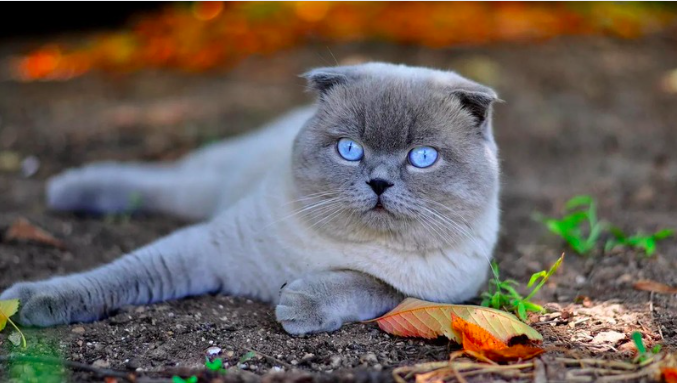
The Enchanting Scottish Fold: A Guide to the Adorable Feline with Folded Ears
Welcome to the world of the Scottish Fold cat, where charm and curiosity meet in an irresistibly adorable package. With their distinctive folded ears and sweet expression, Scottish Folds have captured the hearts of cat lovers around the world. Originally hailing from Scotland, these cats are known for their gentle demeanor, playful nature, and loving personality.
In this comprehensive guide, we will delve into the fascinating world of Scottish Fold cats, exploring their history, physical characteristics, personality traits, and care requirements. Whether you’re a seasoned cat owner or considering adding a feline friend to your family, the Scottish Fold’s unique charm and affectionate nature make them a delightful addition to any home. Join us as we unravel the enchanting tale of the Scottish Fold cat and discover why they are such beloved companions.
Fold
Overview
The Scottish Fold cat is a charming and distinctive breed known for its unique folded ears and sweet expression. Originating from Scotland in the 1960s, these cats have captured the hearts of many with their endearing appearance and affectionate nature. Scottish Folds are known for their gentle and loving temperament, making them wonderful companions for families and individuals alike.
History and Origins
The Scottish Fold breed traces its roots back to a white barn cat named Susie, who was found in Scotland in the early 1960s. Susie had a unique genetic mutation that caused her ears to fold forward, giving her an owl-like appearance. This trait was passed down to her kittens, and thus, the Scottish Fold breed was born. The breed quickly gained popularity for its distinctive look and friendly demeanor, and it was officially recognized by cat registries in the 1970s.
Physical Characteristics
- Folded Ears: The most distinctive feature of the Scottish Fold is its folded ears, which give the cat a sweet and owl-like appearance. Not all Scottish Folds have folded ears; some may have straight ears, known as “straights,” which are also common in the breed.
- Coat and Colors: Scottish Folds can have either a short or long coat, both of which are dense and plush. They come in a variety of colors and patterns, including tabby, tortoiseshell, and solid colors like white, black, and blue.
- Body Structure: Scottish Folds are medium-sized cats with a rounded appearance. They have sturdy bodies, round faces, and large, expressive eyes that give them a sweet and gentle expression.
Personality and Behavior
Scottish Folds are known for their calm and laid-back demeanor. They are affectionate cats that enjoy being around people and are often described as “lap cats” due to their love of cuddling. They are also known for their playful nature and enjoy interactive toys and games. Scottish Folds are generally good with children and other pets, making them a great choice for families.

Health and Care
- Ear Care: Due to their folded ears, Scottish Folds may be prone to ear infections. It’s important to regularly check and clean their ears to prevent issues.
- Grooming: Scottish Folds have dense coats that require regular grooming to prevent matting and tangling. Weekly brushing is usually sufficient to keep their coat in good condition.
- Health Concerns: Scottish Folds are generally healthy, but they may be prone to certain genetic conditions, including a skeletal disorder known as osteochondrodysplasia. Responsible breeding practices can help minimize the risk of these health issues.
Training and Activities
Scottish Folds are intelligent cats that can be trained to perform tricks and commands. They enjoy interactive play and benefit from toys that stimulate their minds and bodies. Providing them with scratching posts and other outlets for their natural behaviors can help keep them happy and healthy.
Compatibility with Families and Other Pets
Scottish Folds are known for their gentle and affectionate nature, making them great companions for families. They are good with children and other pets, including dogs, and can adapt well to different environments. Their loving and sociable nature makes them a popular choice for households looking for a friendly and affectionate pet.
Conclusion
The Scottish Fold cat is a unique and charming breed known for its folded ears and sweet expression. With their gentle demeanor and affectionate nature, Scottish Folds make wonderful companions for families and individuals alike. Whether you’re looking for a lap cat to cuddle with or a playful friend to keep you entertained, the Scottish Fold cat is sure to bring joy and companionship to your home.
FAQs about Scottish Fold Cats
Why do Scottish Folds have folded ears?
Scottish Folds have a genetic mutation that affects the cartilage in their ears, causing them to fold forward. This unique trait gives them their distinctive appearance.
Are Scottish Folds prone to ear problems due to their folded ears?
Yes, Scottish Folds may be more prone to ear infections due to the fold in their ears, which can trap dirt and moisture. Regular cleaning and monitoring of their ears can help prevent issues.
Do Scottish Folds have any health issues associated with their folded ears?
Scottish Folds may be prone to a condition called osteochondrodysplasia, which affects the development of their cartilage and bones. Responsible breeding practices can help reduce the risk of this condition.
Are Scottish Folds good with children and other pets?
Scottish Folds are known for their gentle and friendly nature, making them good companions for families with children and other pets. They enjoy socializing and being part of the family.
Do Scottish Folds require a lot of grooming?
Scottish Folds have dense coats that require regular grooming to prevent matting and tangles. Weekly brushing is recommended to keep their coat in good condition.
We appreciate you for taking the time to read this article!
Finally, we hope you found this article interesting? And what do you think about ”The Enchanting Scottish Fold: A Guide to the Adorable Feline with Folded Ears!?”
Please feel free to share or inform your friends about this article and this site, thanks!
And let us know if you observe something that isn’t quite right.
Cats
The Enchanting Burmese Cat: Affectionate, Playful, and Loyal
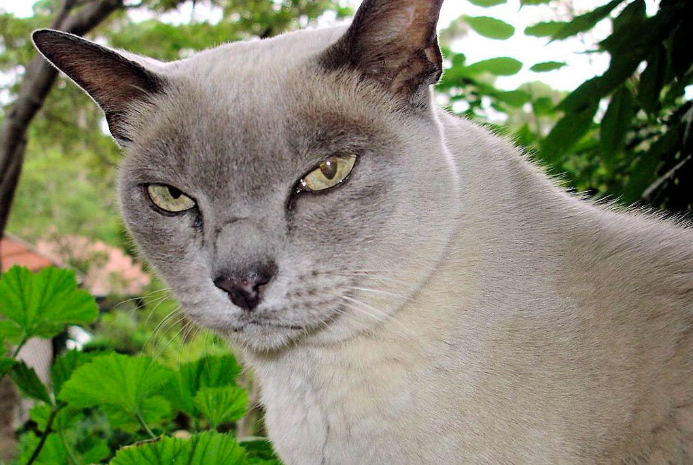
The Enchanting Burmese Cat: Affectionate, Playful, and Loyal
Enter the world of the Burmese cat, where elegance meets affection in a charming feline companion. Originating from the temples of Burma, these cats have captured the hearts of cat lovers worldwide with their striking appearance and loving nature. With their sleek coats, expressive eyes, and playful demeanor, Burmese cats are not just pets; they are cherished members of the family.
In this comprehensive guide, we delve into the captivating world of Burmese cats, exploring their history, physical characteristics, personality traits, and care requirements. Whether you’re a seasoned cat owner or considering adding a feline friend to your family, the Burmese cat’s unique blend of beauty, intelligence, and affection is sure to captivate you. Join us as we unravel the enchanting tale of the Burmese cat and discover why they are such beloved companions.
Burmese
Overview
The Burmese cat is a breed known for its striking appearance and affectionate nature. Originating from Burma (now Myanmar), these cats are renowned for their sleek, muscular bodies, expressive eyes, and silky coats. Burmese cats are often described as “people-oriented,” as they form strong bonds with their human companions and enjoy being part of the family. Their playful and curious nature makes them delightful companions for both children and adults alike.
History and Origins
The history of the Burmese cat can be traced back to ancient Burma, where they were considered sacred and kept by monks in temples. They were later brought to the West in the early 20th century and quickly gained popularity for their striking appearance and affectionate personality. The breed has since become a favorite among cat enthusiasts worldwide, known for its loving and loyal nature.
Physical Characteristics
- Coat and Colors: Burmese cats have short, sleek coats that lie close to the body. They come in a variety of colors, including sable, champagne, blue, and platinum. The coat is soft and silky to the touch, adding to the breed’s overall charm.
- Body Structure: Burmese cats are medium-sized with a muscular build. They have rounded heads, large, expressive eyes, and short, straight noses. Their compact bodies give them a sturdy appearance, and they move with grace and agility.
- Eyes and Ears: Their eyes are one of their most striking features, being large, expressive, and usually a deep, rich color that complements their coat. Their ears are medium-sized, slightly rounded at the tips, and set wide apart on the head.
Personality and Behavior
Burmese cats are known for their affectionate and sociable nature. They are often described as “dog-like” due to their tendency to follow their owners around the house and seek out human companionship. They are also highly intelligent and enjoy interactive play, making them great companions for families with children or other pets.
In addition to their affectionate nature, Burmese cats are also known for their vocalizations. They have a soft, sweet voice that they use to communicate with their owners, often engaging in “conversations” and expressing their needs and desires.

Health and Care
- Grooming: Burmese cats have short coats that require minimal grooming. Weekly brushing is usually sufficient to remove loose hair and keep their coat shiny. They also benefit from regular dental care to prevent oral health issues.
- Diet: A high-quality, balanced diet is essential for maintaining the health and vitality of Burmese cats. They should be fed a diet that is appropriate for their age, size, and activity level to ensure they receive the nutrients they need.
- Health Concerns: Burmese cats are generally healthy, but they can be prone to certain genetic conditions such as hypertrophic cardiomyopathy (HCM) and diabetes. Regular veterinary check-ups and a healthy diet can help manage these risks.
Training and Activities
Burmese cats are intelligent and can be trained to perform various tricks and commands. They enjoy interactive play and thrive on mental stimulation. Providing them with toys, puzzle feeders, and opportunities for play can help keep them entertained and prevent boredom.
Compatibility with Families and Other Pets
Burmese cats are known for their loving and social nature, making them great companions for families. They get along well with children and other pets, including dogs, as long as they are properly introduced. Their affectionate demeanor and playful nature make them a popular choice for households looking for a friendly and engaging pet.
Conclusion
The Burmese cat is a breed beloved for its affectionate nature, striking appearance, and playful personality. Whether you are looking for a loyal companion or a playful friend, the Burmese cat is sure to bring joy and warmth to your home. With their loving nature and sociable demeanor, Burmese cats make wonderful pets for families and individuals alike, enriching their lives with their presence and affection.
FAQs about Burmese Cats
What is the temperament of a Burmese cat like?
Burmese cats are known for their affectionate and social nature. They are often described as “dog-like” due to their loyalty and tendency to follow their owners around the house. They enjoy being involved in family activities and form strong bonds with their human companions.
Are Burmese cats good with children and other pets?
Yes, Burmese cats are generally good with children and other pets. They are playful and enjoy interactive play, making them great companions for families with children. They also get along well with other pets, including dogs, especially if they are introduced properly.
Do Burmese cats require a lot of grooming?
Burmese cats have short, sleek coats that require minimal grooming. Weekly brushing is usually sufficient to remove loose hair and keep their coat shiny. They also benefit from regular dental care to prevent oral health issues.
Are Burmese cats vocal?
Burmese cats are known for their soft, sweet voice, but they are not excessively vocal. They use their voice to communicate with their owners, often engaging in “conversations” and expressing their needs and desires.
What kind of environment is best for a Burmese cat?
Burmese cats thrive in environments where they have plenty of opportunities for play and interaction. They enjoy being part of the family and should have access to toys, scratching posts, and other enrichment activities. They also enjoy having access to outdoor enclosures or safe outdoor spaces where they can explore and indulge their natural instincts.
We appreciate you for taking the time to read this article!
Finally, we hope you found this article interesting? And what do you think about ”The Enchanting Burmese Cat: Affectionate, Playful, and Loyal!?”
Please feel free to share or inform your friends about this article and this site, thanks!
And let us know if you observe something that isn’t quite right.
-

 Pet Care2 years ago
Pet Care2 years agoThe Best Dog Collars For 2022
-

 Dogs2 years ago
Dogs2 years agoBichon Frise: The Happy, Playful, and Cuddly Companion
-

 Trending Pet Stories1 year ago
Trending Pet Stories1 year ago2023 ‘World’s Ugliest Dog’ Winner: Scooter’s Tale of Resilience
-

 Animals2 years ago
Animals2 years agoAre There Animals Having Down Syndrome?
-

 Pets2 years ago
Pets2 years agoThe Fascinating World Of The Red Chameleon
-

 Dogs2 years ago
Dogs2 years agoTop 10 Most Popular Dog Breeds According To AKC.
-

 Dogs2 years ago
Dogs2 years ago21 Dog Breeds That Resemble Bears Or Teddy Bears!
-

 Dogs2 years ago
Dogs2 years agoEskimo Dogs from Canada – What Are They? – Find Out!


